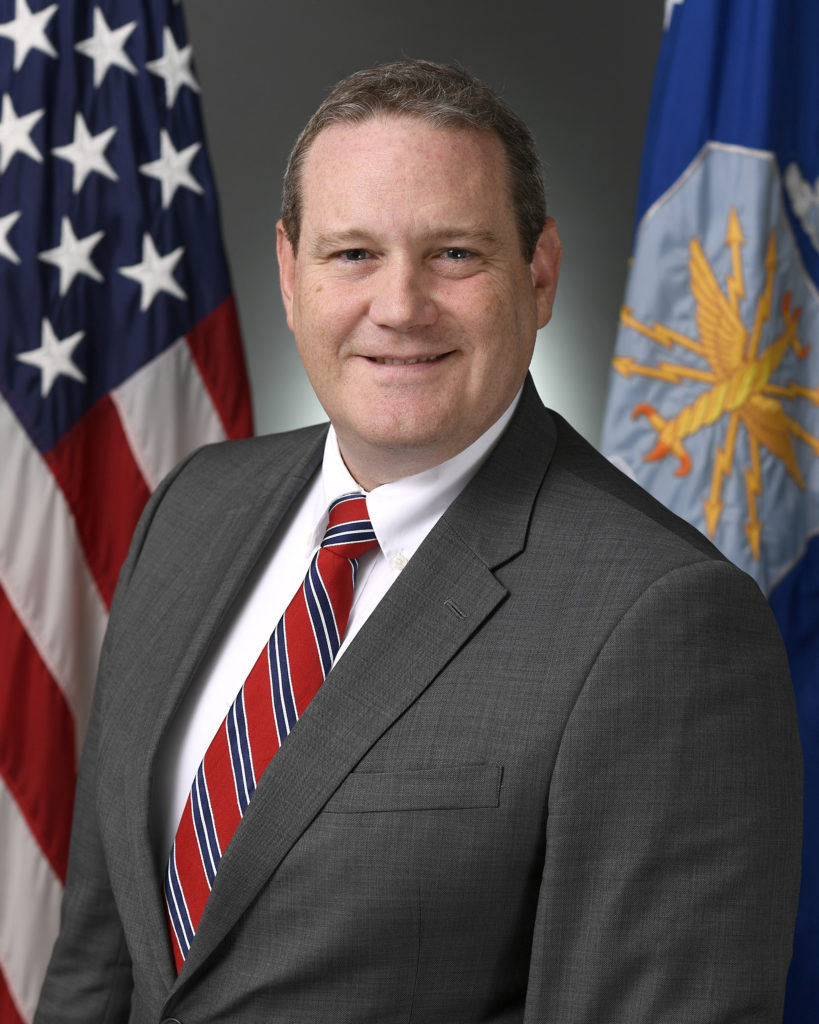Van Ovost: Time to Invest in Next Generation of Tankers, Airlifters
By Greg Hadley
The Air Force needs to start investing in its “next generation of strategic mobility and refueling assets,” U.S. Transportation Command boss Gen. Jacqueline D. Van Ovost said Sept. 20—and that means replacing the two pillars of those respective fleets.
“The C-17 has demonstrated its merits countless times, but the last one was delivered to the Air Force in 2013,” Van Ovost told reporters at AFA’s Air, Space & Cyber Conference. “When we receive the last KC-46 at the end of this decade, we will still have hundreds of Eisenhower-era KC-135s in our fleet that must be recapitalized.”
Aerial Refueling
In June, the Air Force sent a request for information to the aviation industry launching the Advanced Aerial Refueling Family of Systems (AAR FoS) program. The program, intended to develop new and existing technologies to go on both current tankers and future ones, detailed some of the attributes it needs, including connectivity, survivability, and increased situational awareness.
Van Ovost called those required attributes “heartening” and detailed how TRANSCOM helped shape them with its own studies.
“We’ve been working with [U.S. Indo-Pacific Command], PACAF in particular, on how we would employ those airplanes … and what environment they will be in and what we’re refueling,” Van Ovost said. “It really sort of calculates what kind of airplanes we need, and in what positions.” The simulations also show whether “you can modulate how much more fuel they take; or if they take less fuel, would they have this or that, [and] what value would that be to the battlefield.”
Air Mobility Command, the Air Staff, and the Office of the Secretary of Defense receive the results of those sturies, Van Ovost said, and will help inform the requirements for the service’s KC-Y “bridge tanker” and KC-Z programs. Requirements for KC-Y are set to be unveiled this fall, while work on the KC-Z future tanker begins in 2023, officials have said.
Van Ovost also detailed some of the capabilities she believes future tankers will need.
“I can tell you, spoiler alert, it’s got to be connected like the KC-46,” Van Ovost said. “Gone are the days where you can just go out there and go to an anchor orbit and just wait for someone to come. It has to be connected and have some sort of battlespace awareness, even if it’s MacGyvered on … because that is key to survivability.”
On top of that, maneuverability will matter so that the aircraft can be “in the fight, literally linked to everybody so that it can be of more value,” according to Van Ovost.
And if tankers are in the fight, they’ll need some form of defense.
“I’m not saying you have to have an onboard defense, but have a defense,” Van Ovost said. “What is it? What’s the spectrum defense? What’s the kinetic defense? But that could look like multiple things. It could look like a loyal wingman. It could look like you’re on the network and someone else on that network sees it and takes care of it, and they aren’t anywhere close to you.”
All of those requirements, however, aren’t locked in, and Van Ovost said TRANSCOM will likely conduct wargames to test them in “more of a final stage.”
Mobility
While the push to replace the 60-year-old KC-135 has been going on for years now, the C-17 Globemaster III is relatively new in comparison, and the Air Force hasn’t sought to cut its fleet.
But while the average C-17 is decades younger than the KC-135, the airlifter has been used hard—with no obvious immediate successor.
“It’s been critical to the fight. But I’m aware that we’re using them a lot, and there are no [active production lines] for a capability like that—a roll-on, roll-off kind of capability” versus lifting, Van Ovost said of the C-17. “It makes a huge difference for throughput if you can roll-on, roll-off an airplane.”
Van Ovost also noted that the C-5 Galaxy, the Air Force’s largest airlifter, isn’t “getting any younger, either,” heightening the importance of keeping the C-17 fleet airworthy.
The Air Force has articulated plans to keep the C-17 in service through the 2050s—but Van Ovost suggested that TRANSCOM is already looking ahead to its successor.
“We need to be able to … consider in the concepts looking forward, how much stuff are we moving forward, what kinds of stuff, and what kinds of capabilities that airplane will need?” said Van Ovost. “So as we do these studies, we keep the airlift in the fight, and we keep pushing to the Air Force and refreshing what we think the next airlifter should look like.”
What exactly that will be, Van Ovost didn’t say. But she did point to the Air Force’s operational concept of agile combat employment—emphasizing smaller teams of multi-capable Airmen who can operate in remote or austere locations—along with similar ideas from the other services, as what will “really define” the aircraft’s requirement.
Acquisition Inflation Being Managed on a Case-by-Case Basis, Hunter Says
By John A. Tirpak
Despite inflation at levels not seen in decades, Air Force primes have yet to demand major adjustments to existing contracts, but there are concerns about lower-tier vendors, Air Force service acquisition executive Andrew P. Hunter said.
Speaking with reporters at AFA’s Air, Space & Cyber Conference, Hunter said the structure of contracts usually means the company “has to make a request” for inflation adjustments.
“The contractor has to come forward and say, ‘These are the costs that we are seeing—we need some kind of adjustment,’” he explained. But “we haven’t had much of that … yet.”
The Air Force is also not planning a large “across-the-board, everyone-gets-an-adjustment” action, because each contract is unique, and inflation is affecting various programs and companies differently.
“Not everyone has been impacted in the same way. … The impacts are pretty broad, but they’re not the same magnitude for everyone,” he said.
“The issue is fixed-price contracts,” Hunter continued. While such agreements usually compel the vendor to absorb inflation losses, there may be ways to mitigate them, depending on the needs of the service and other factors, he said.
The Federal Acquisition Regulations were “developed in the 1960s and ‘70s, when there was a lot of inflation, so mechanisms exist to deal with this,” he said.
Pentagon acquisition and sustainment chief William A. LaPlante will issue guidance for all the military services to “try to understand how” to reply “should those requests come about and what are the natural channels that exist” to deal with them. LaPlante’s guidance will tell contractors, “this is how you ask us.”
Hunter acknowledged that for those “high dollar value” contracts still in negotiation, “we do see that there are higher dollar values than we anticipated.”
In all cases, the Air Force will have to work to ensure that “the costs that are being cited to us are supported by the data.”
Hunter said the Air Force does not have direct visibility into the health of subcontractors, especially at the lowest level of supply, and so is paying close attention to what is being said at industry days, through trade associations “that focus on the supply chain” and through small business advocates.
“We are listening carefully,” he said. “We” and Air Force Materiel Command “have our ear to the ground.”
But primes are also being reminded that they are “responsible for their subs; that’s a big part of what they get paid to do,” Hunter noted.
“We are … instructing the primes that they need to assure that their supply chain is going to be able to deliver,” he said. “If there are companies at risk because of inflation, you need to identify that and look at ways to mitigate that.”
Hunter said the Air Force has noticed that for some products and components, “we … are starting to see substantial lead times to get things; much longer than is typical.” Consequently, “we may have to identify alternatives to meet program schedules.”

